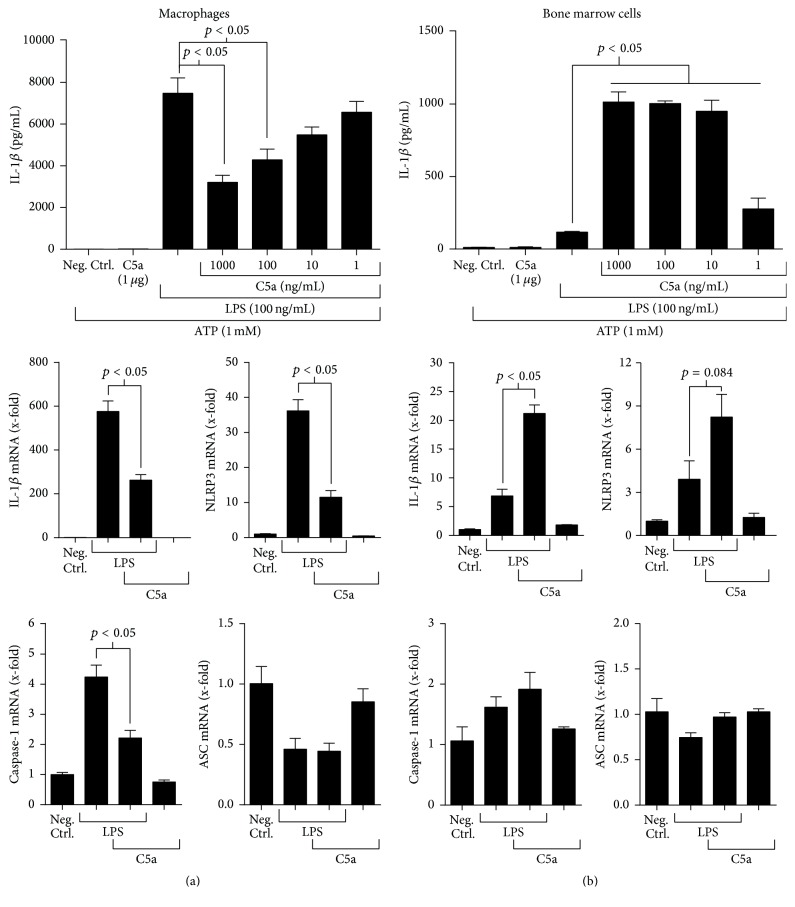Figure 2.
C5a suppresses NLRP3 function in macrophages but augments LPS-primed IL-1β production in bone marrow cells. For quantifying IL-1β release, 1 × 106 thioglycollate-elicited peritoneal macrophages (a) or total bone marrow cells (b) were harvested, treated with LPS (100 ng/mL) in the absence or copresence of varying C5a concentrations for 4 hours, and then stimulated with ATP (1 mM) for 45 minutes to achieve NLRP3 inflammasome activation. IL-1β levels in cell-free supernatants were determined using ELISA (top panels). qRT-PCR assays (middle and bottom panels) were performed on mRNA isolated from 1 × 106 peritoneal macrophages (a) or bone marrow cells (b) 4 hours after culture with or without LPS (100 ng/mL) in the presence or absence of C5a (1,000 ng/mL). ATP treatment was not performed for mRNA quantification experiments. Relative expression levels of inflammasome component genes (indicated as fold change) were normalized to GAPDH expression and calculated using the 2−ΔΔCt method. ELISA and qRT-PCR data are shown as mean values ± standard error of the mean. Experiments were performed in triplicate for ≥2 independent experiments, and representative data are shown. Results indicated that C5a attenuates TLR4-mediated macrophage IL-1β production but enhances NLRP3 function in bone marrow cells. Neg. Ctrl. = negative (unstimulated) control.

